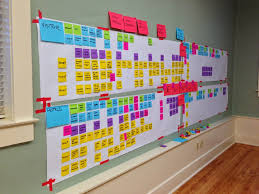CX Visioning: Why your Customer Journey Map isn’t rockin’ your C-Suite
Customer journey mapping is the popular concept right now for many companies. But for many companies, it isn’t having the impact that it deserves with the C-Suite. As a CMO and C-Suite member for several billion-dollar enterprises, I saw that having a great customer journey map just isn’t enough to get the C-suite to put the Customer Experience strategy as one of the top company priorities.
In my original article “5 ways to make your C-Suite commend – not criticize – your Customer Journey Map” I highlighted the 5 reasons why.
1. Most Customer Journey Maps are Descriptive – but not Prescriptive
2. Most Customer Journey Maps don’t show the impact on Business Metrics
3. Most Customer Journey Maps don’t have a Program or PMO to execute them
4. Most Customer Journey Maps don’t have an ROI or business case
5. Most Customer Journey Maps don’t have clarity of accountability
This article addresses issue #1 – the need to define a CX vision. Let’s start with the current state of customer journey mapping market. An online search pulls up two key images that depict today’s customer journey mapping environment:
The current state journey map (D Lab example)

The journey mapping workshop (patternservicedesign.com)

- Good, but not good enough
There is nothing wrong with the above examples. They are illustrative journey maps that capture the emotional core of specific personas along the journey. They contain rich customer insights, qualitative research and VoC data that tells a great story why the customer isn’t getting the experience they deserve. They are graphically depicted using well-designed imagery. Journey mapping workshops help to work across the silo’s of an organization and engage employees in the discovery process. They highlight the pain points of the journey, illuminate moments of truth and align improvement opportunities across the journey in a coherent manner. Sounds great right?
But as a CEO for a major utility told me, “McKinsey insisted on doing journey maps for our CX effort as an upfront diagnostic. They highlighted a number of problems, but they failed to define the desired customer experience that would both build the partnerships we need and deliver the experience that would drive our business. The discovery process created departmental fragmentation instead of the alignment we needed. In the C-suite, we simply don’t take this work seriously without a vision of the customer experience we need to deliver and the impact on our business. Without this, CX can’t compete with the other initiatives we are investing time and resources in”.
Below is an example of a financial technology firm’s journey map for some of its most important customers. This future state map that shows the desired experience at every step, touchpoint targets, program improvement efforts and the ability to improve account profitability by 55% by delivering the target customer experience. This Journey map resonated with the C-Suite – and compelled them to make the necessary investment in the projects necessary to deliver the new experience.

– Source: Tucker & Company, 2016
Great customer journey / experience maps should illuminate:
• Target Experience – The desired experience that each persona should have at each stage of the journey (ultimately for every significant use case) – and why. This becomes the foundation for the customer experience elements of brand attributes and marketing/sales messaging.
• Experience Delivery – The approach that each experience-delivery staff, partner or self-service technology should deliver at each step to deliver the target experience. This naturally leads to a service delivery blueprint built into training, online guides and performance management materials
• CX Metrics – The metrics and targets that should be monitored and managed to at each step of the journey (including touchpoint metrics and end-of-journey metrics). These are typically included in the CX dashboard to monitor the program progress.
• Business Results – The business impact of delivering the improved customer experience that are built into planning and budgeting estimates for review and approval by the C-Suite.
Don’t let the opportunity that Customer Experience Transformation holds for every company to be under-funded or de-prioritized.



